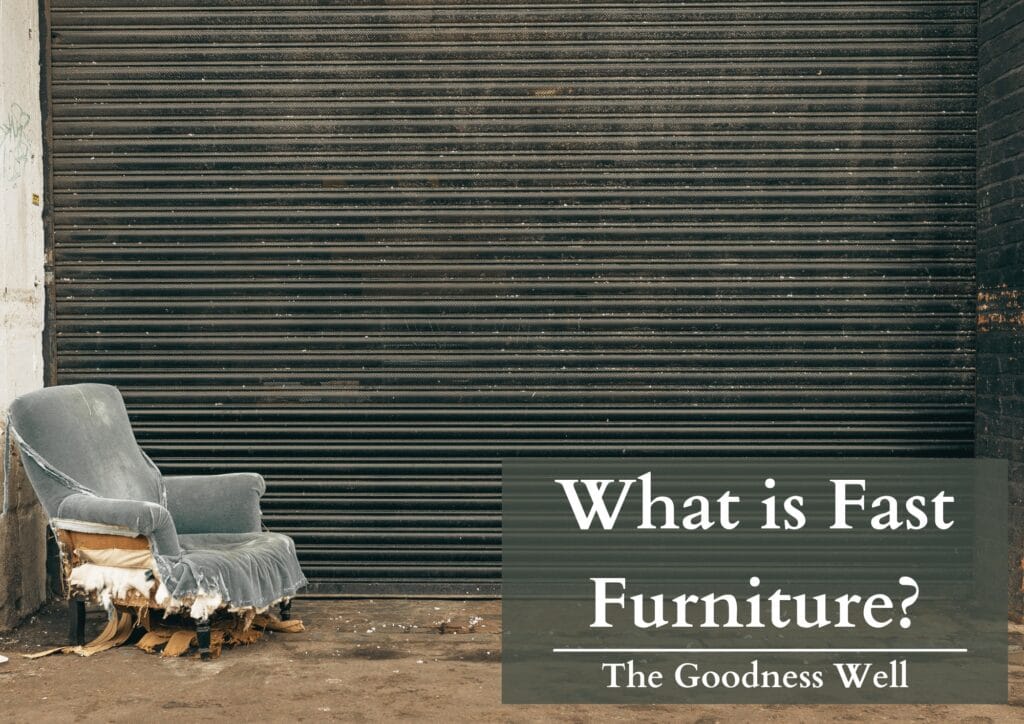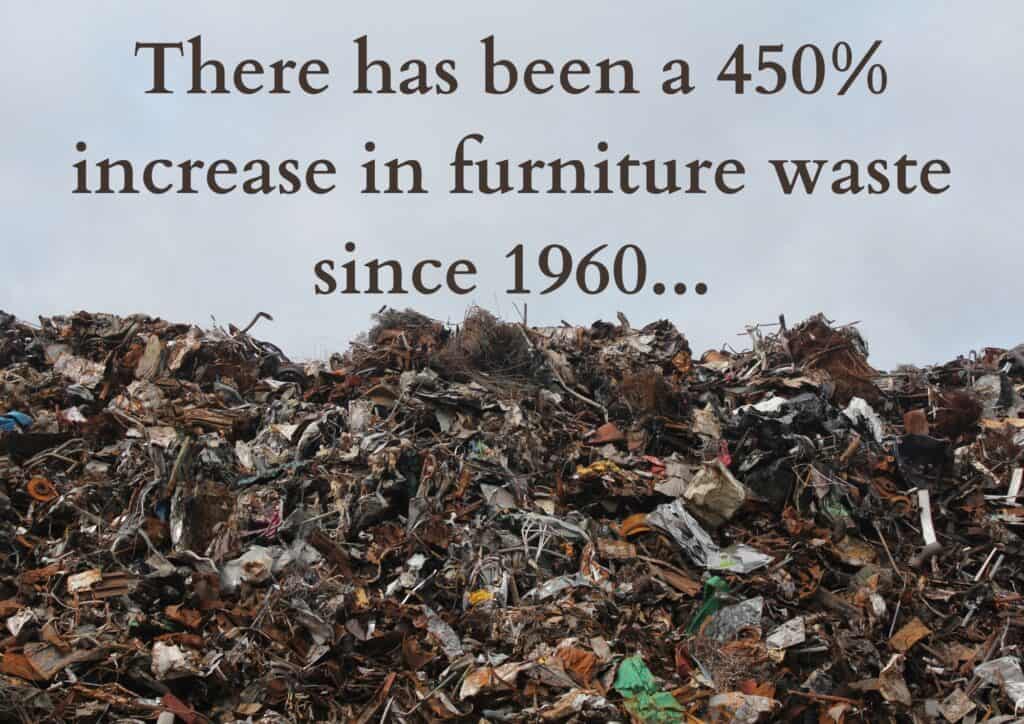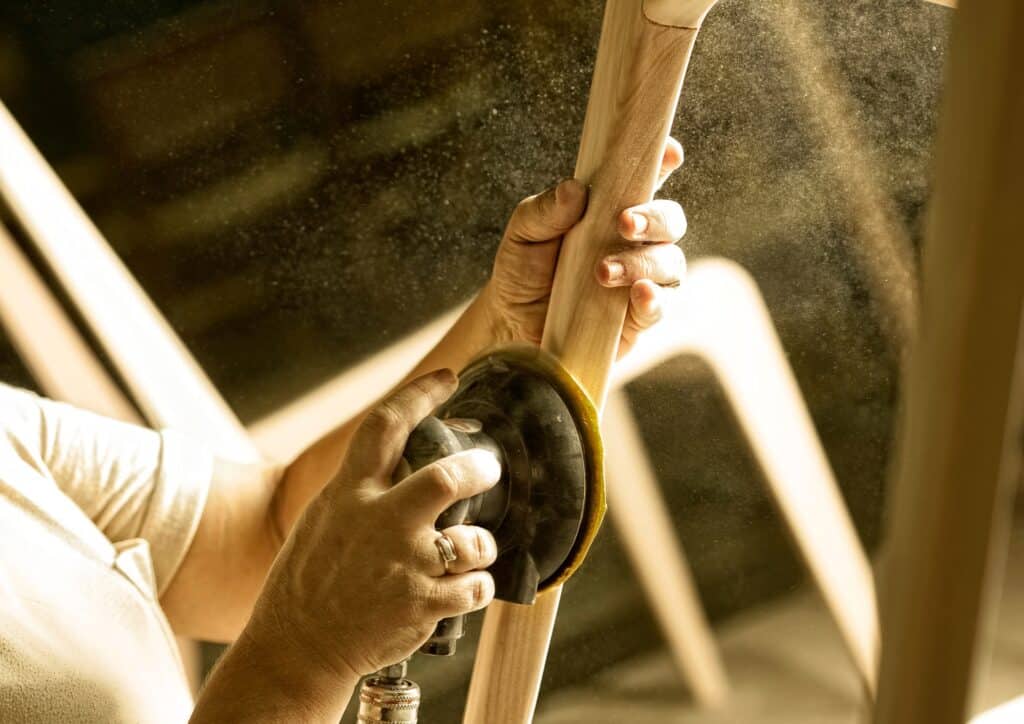What is Fast Furniture and Why Is It a Problem?

Have you ever stumbled upon furniture that was just too cute and too cheap to pass up? So you buy it and then in just a year or two it’s worn down and now you find yourself out shopping for new furniture.
Welcome to the world of fast furniture.
It’s estimated that Americans throw out over 12 million tons of furniture every year!
Straight to the landfill, they go…
But what is fast furniture and why should we be concerned?
Let’s get into it.
TL;DR
Fast furniture, is trendy, affordable, and mass-produced furniture. But the problem is that these pieces are not designed to last long… instead, they’re intended to just be more affordable and popular, often at the expense of quality and sustainability. Fast Furniture contributes to environmental issues like pollution and high carbon levels due to its rapid deterioration and landfill waste.
Fast Furniture Waste and Environmental Impact

We can’t deny fast furniture has made trendy home designs accessible to many, but its rise has brought with it significant environmental challenges.
To really understand how big of a deal this is, we need to look at not just the waste, but also how these things affect the environment from start to finish.
1. Soaring Waste Levels

Short Lifespan:
Built to cater to quick design trends and produced using low-quality materials, these items deteriorate quickly.
This means people are replacing their furniture at a much faster rate.
Landfill Overload:
The end destination for most discarded furniture is landfills.
With the cheap and trendy furniture boom, landfills are experiencing an insane increase in furniture waste.
Not only does this take up so much space but also takes decades, sometimes centuries, to decompose and break down. Some materials don’t break down at all.
According to recent statistics, 12.1 million tons of furniture in the US and 11 million tons in the EU, are discarded annually.
This is alarming, to say the least…
2. The Environmental Toll of Production

Resource Extraction:
Producing fast furniture requires a significant amount of raw materials.
The rapid extraction of resources like wood leads to deforestation and habitat loss.
Not to mention a lot of producers resort to cheaper often more unethical labor and resource extraction.
We’ve all seen pictures and documentaries of sweatshops and child labor workers…that stuff is real and a lot of us need to wake up.
Chemical Usage:
To produce products quickly and cheaply, manufacturers resort to harmful chemicals found in treatments, finishes, and glues.
These chemicals can release volatile organic compounds (VOCs) like formaldehyde into the environment and our homes, affecting air quality and posing serious health risks.
Carbon Footprint:
The mass-production nature of this involves energy-intensive processes.
The transportation of these products alone contributes to large amounts of greenhouse gas emissions.
Its short lifespan means frequent replacements, increasing its impact. When discarded, it often ends up in landfills, emitting methane, or if burned, releasing CO2 and potential toxins.
3. Socio-Economic Impact

It’s so important to understand that, yes, while fast furniture provides consumers with affordable and trendy options, it comes at the expense of workers in low-wage countries facing poor working conditions and low pay.
It’s this type of consumerism that contributes to job losses in traditional, local businesses.
The disposal of such items places a strain on waste management systems and increases the demand for public costs for landfill management.
Meanwhile, the desire for handcrafted sustainable products decreases as fast furniture dominates the market.
Quality over Quantity Problem:
Because fast furniture production companies produce mass amounts of products that are cheaply made in factories with machines and synthetic materials, the quality and uniqueness is lost.
In other words, handmade craftsmanship is deserted for the cheaper products you can find in anyone’s house or in any mainstream store.
Traditional craftsmen find it hard to compete with the low prices offered by unsustainable furniture brands.
This has led to a decline in genuine craftsmanship and an appreciation for unique design.
As companies outsource production to areas where labor is cheap, it affects the local job market, potentially leading to job loss in certain regions.
4. Consumerism and the Throwaway Culture

Fast furniture encourages a disposable mindset.
This ‘buy-use-discard’ cycle not only results in waste but also feeds into a culture of excessive consumerism.
“Consumers in the United States spent $4 billion more on desks, chairs, and patio equipment in 2021 than they did in 2019.” – New York Times
The consumer mindset extends beyond furniture, impacting our consumption patterns in many ways.
According to Psychology and Consumer Culture by Tim Kasser, Ph.D., and Allen D. Kanner, Ph.D., “Consumer Culture Corporate-driven consumerism is having massive psychological effects, not just on people, but on our planet as well.”
Fast Furniture Examples
Many brands are emerging that focus on churning out the latest designs as fast as possible at a fraction of the cost.
Examples of such brands include:
- Wayfair
- Rooms To Go
- Ashley
- IKEA
- Target
- Walmart
Seeking Sustainable Solutions
It’s a good thing that we get to decide if we’re going to contribute to the fast furniture industry that’s consuming our world.
Ways you can choose better:
- Choose Eco-friendly materials: Opting for renewable resources, recycled materials, or sustainable wood.
- Upcycling and DIY: Repurposing old items to give them a new life.
- Supporting Ethical Brands: Brands that prioritize fair labor practices and sustainable production.
- Look for brands that support the “slow furniture movement“.

The Sustainable Solution
As consumers, we have the power to choose sustainable furniture solutions that make a positive impact.
While fast furniture may be an attractive, affordable option in the short term, it’s essential to weigh the long term.
By making informed decisions, we can enjoy stylish living spaces without compromising our planet’s health.






